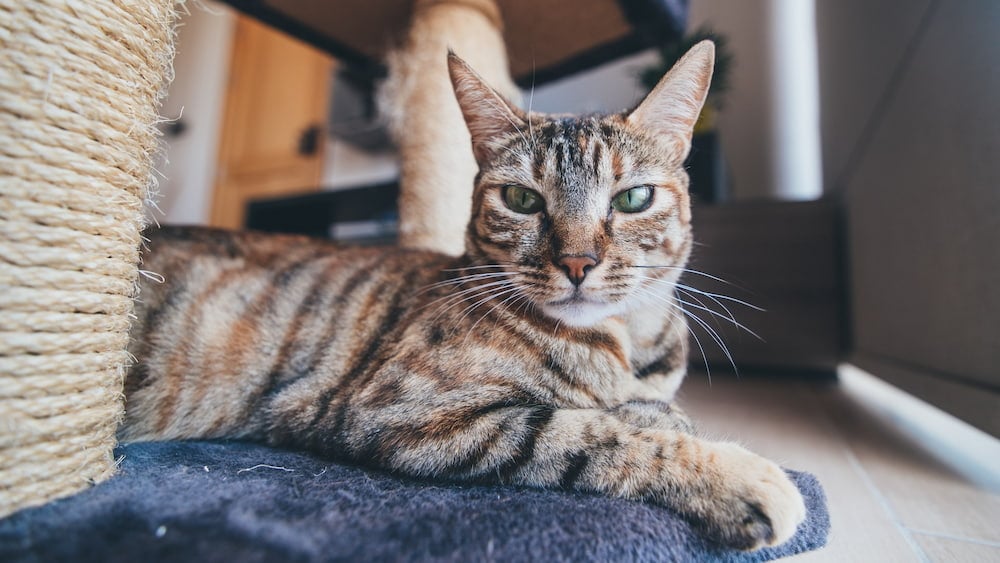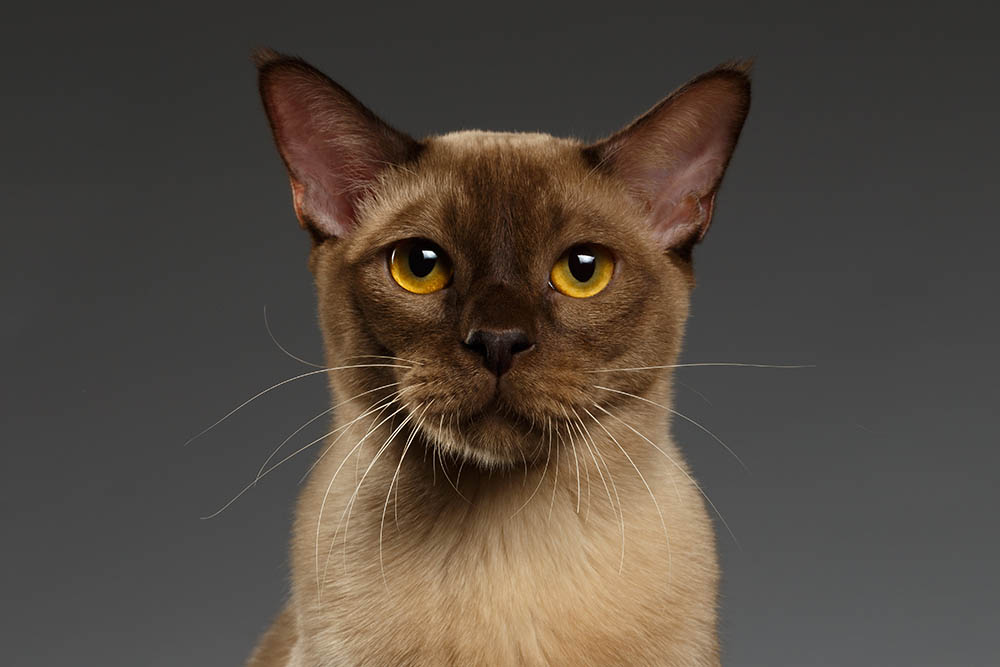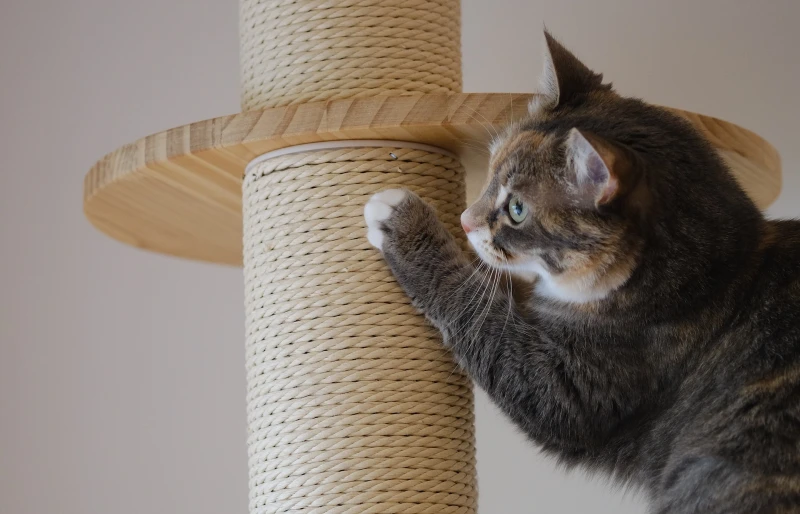VET APPROVED

The information is current and up-to-date in accordance with the latest veterinarian research.
Learn more »Click to Skip Ahead
While all cats vary slightly in terms of facial features, their overall anatomy is the same. For example, cats have whiskers on the sides of their mouths, which are used to sense things around them. There is one question that people often ask about cats, which is whether or not they have eyebrows. The short answer may surprise you: No, cats don’t have specific hairs for eyebrows. However, they do have whiskers, or vibrissae, located above their eyes. These are part of their sensory system, and along with their facial muscles, they help cats change their facial expressions.
Read on to find out all about these distinctive hairs, what they are used for, and how they differ from breed to breed.

Human Eyebrows vs. Cat Eye Whiskers
Cats and humans differ in the amount of type of facial hair both species have. In humans, eyebrows are a type of facial hair that is found above the eyes. There are several reasons why they are important. First of all, they help to prevent dirt and sweat from getting into the eyes. A second benefit is that they can make the eyes look bigger or more expressive by enhancing their appearance. Third, they can help to frame the face and make it look more symmetrical. Finally, eyebrows can play an important role in nonverbal communication, conveying emotions such as anger, sadness, or surprise.
Cats, except for ‘hairless’ breeds, of course, are much hairier on their faces than humans are, so they don’t actually need bushy eyebrows like ours to shield their eyes. Their faces are covered in fur which helps keep their eyes protected. These whiskers can provide eye protection by collecting moisture and particles to prevent them from entering the eyes, that is not their primary function. Cats have eye whiskers above their eyes because they serve an important purpose in the cat’s sensory system.
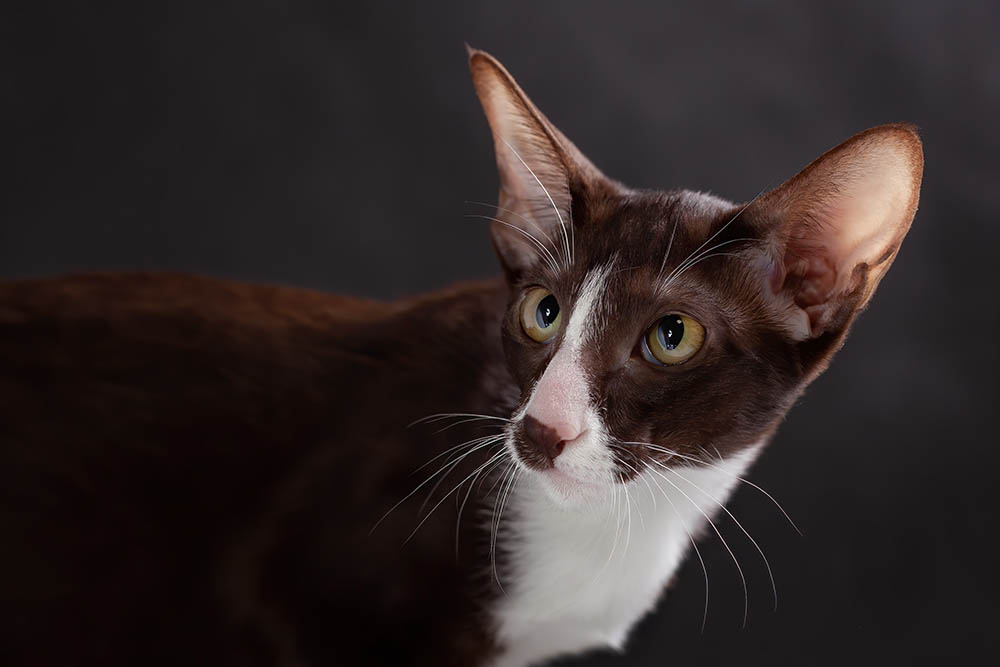
How Are Whiskers Different from Regular Cat Hair?
The whiskers on a cat’s body stand out despite the fact that they emerge from hair follicles like other hairs. Whiskers have roots that extend three times deeper than regular hair, as well as being coarser and thicker than regular hair. In contrast to regular hairs, whiskers do not cover the entire body. There are several distinct areas where they are found on the face and the forelegs. The cat’s brain receives information from sensory cells located at the base of each whisker follicle.
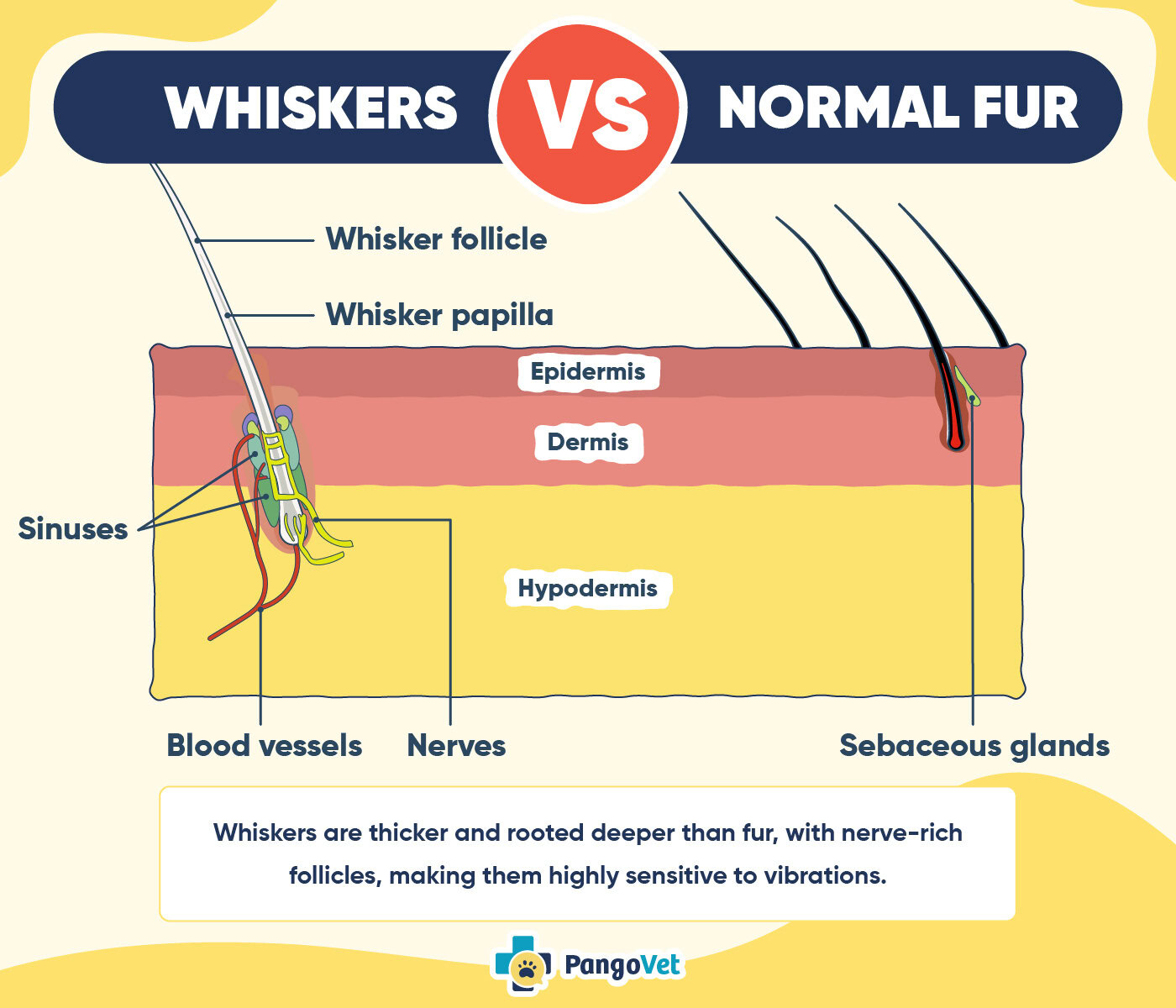
Whiskers: Anatomy and Function
There are three sets of whiskers on most cats’ faces: over the eye or supraorbital, on the chin or mandibular, and the longest set, the muzzle whiskers (mystacial). Whiskers are also called vibrissae and are sensory organs that help cats detect changes in air currents and pressure. Incredibly, whiskers are just as sensitive as human fingertips. In the same way a human perceives the world with their fingertips, a cat can sense their environment with their face. The whiskers are highly innervated and are used by the cat to detect changes in air pressure and movement around them.
The special hair follicles from which whiskers originate are packed with blood vessels and nerves, making them more sensitive than regular hairs. Proprioceptors are the sensory organs located at the base of cats’ whiskers. By transmitting this information to the brain, the proprioceptors assist in the cat’s overall body awareness and spatial orientation.
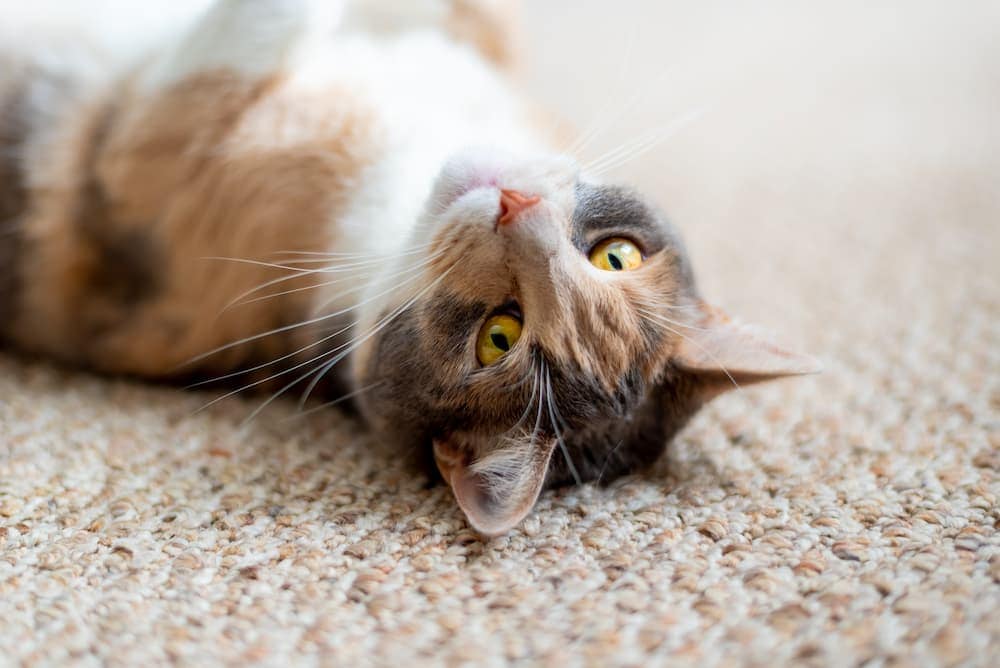
Sensing & Navigating with Whiskers
In addition to helping felines navigate in the dark, the unique biology of their whiskers allows them to gauge the size and shape of objects nearby. By doing so, they are able to navigate their world and avoid predators as well as other dangers in their environment. Additionally, the cat’s whiskers help them to judge the size of openings and whether or not they are able to pass through them based on the size of the gap. It is clear that cats have very sensitive whiskers that aid them in finding their way and in hunting more effectively.

Do All Cat Breeds Have Whiskers Above Their Eyes?
Depending on the breed, cats have different numbers of whiskers on each cheek, but most cats have 12 whiskers in four rows around their mouths and 3 whiskers above each eye. Similarly, while most cat breeds have eye whiskers on their face, the number, length, color, and placement of these whiskers can vary by breed. Ragdolls, Persians, Norwegian forest cats, Maine coons, and Siberians have thicker bushier whiskers above their eyes, whereas some other breeds usually don’t have such luxurious follicles. For example, hairless breeds such as Sphynxes often display smaller, thinner whiskers if they have any at all.
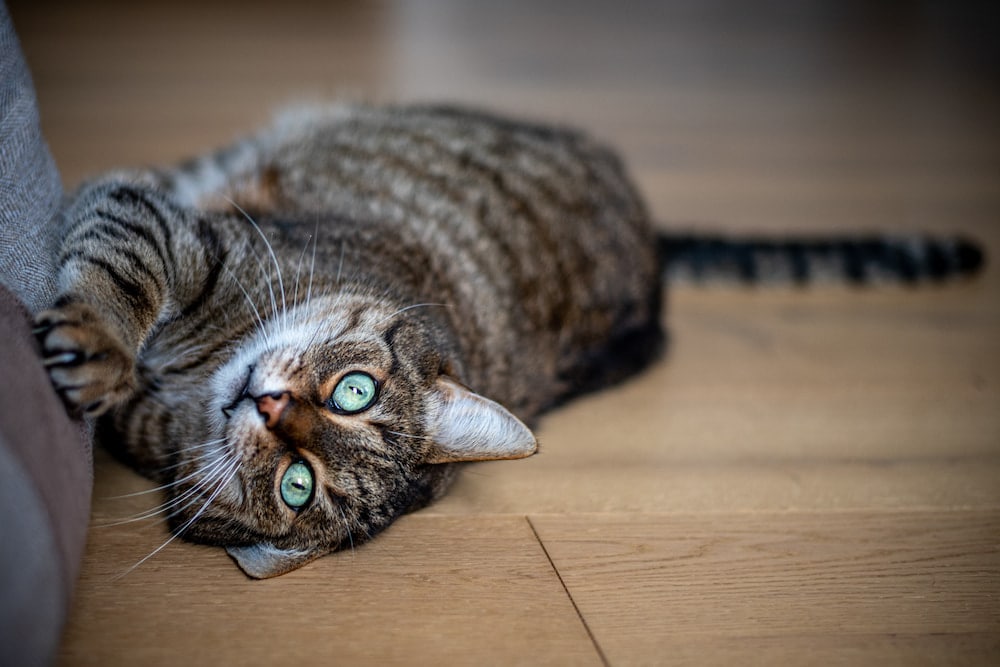
Do Cats Lose Their Eye Whiskers as They Age?
Hair thinning is a natural consequence of feline aging. However, cats don’t develop bald patches due to aging, so hair loss can be a sign of disease or a medical condition, such as mange. Make sure you consult your vet to rule out any other health issues. Whiskers are a type of cat hair, and so cats might lose some of their eye whiskers as they age. When a cat is young, shed whiskers grow back relatively quickly, but the number can decline as cats get older. If your cat is older, they may have fewer or thinner eye whiskers.

Conclusion
In conclusion, cats do not have eyebrows like humans do, but they do have whiskers over their eyes. Although this seems like a minor distinction, whiskers play a different role for cats because they help them navigate their world. In humans, eyebrows primarily protect the eyes and play an important role in communication, conveying emotions and intentions. Cats, however, do have facial muscles that enable them to change their facial expressions, which can convey emotions similar to how we use our eyebrows for communication. So next time you see some of these wispy antennae, take a moment to appreciate all that these extra appendages do to keep your kitty safe and comfortable in their environment.
Featured Image Credit: Ferenc Horvath, Unsplash
